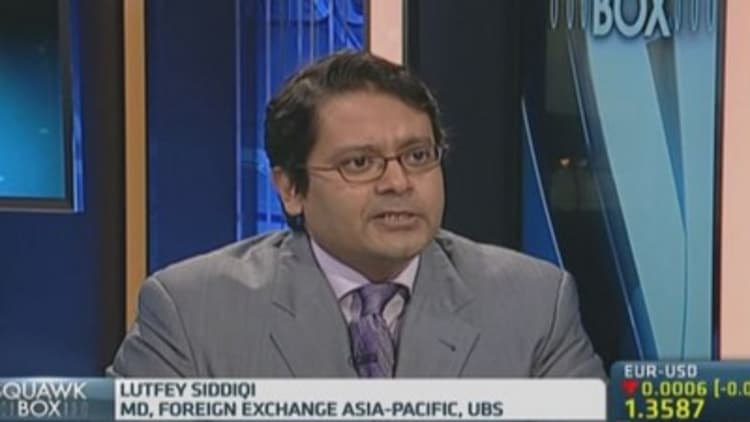With the 2014 World Cup final less than a week away, one analyst told CNBC trading today's global macro-economic environment could be likened to some aspects of the beautiful game.
Loose monetary policy has become the norm, thus trading - currencies in particular - is like partaking in a surreal World Cup football match where the rule makers join the game and the playing field has been warped, said Siddiqi Lutfey, managing director of foreign exchange at UBS.
"Firstly the referees have come down to play," Luftey told CNBC's Asia "Squawk Box" on Monday, comparing them to central bankers.
Read MoreWorld Cup a tipping point for soccer in US?
Global central banks' unusually high purchase of sovereign government bonds in recent years kept interest rates extremely low in some countries, including the U.S. where rates currently sit at 0.25 percent.
"A fifth of new U.S. Treasuries are now bought by the Fed, two thirds of new Japanese government bonds are bought by the Bank of Japan, the European Central Bank (ECB) will charge you interest if you put deposits with them, and the Swiss National Bank has a floor under its exchange rate. The referees have come down to play," he said.
Secondly, the angle of the pitch has been heavily distorted, Luftey said.
Read MoreWorld Cup overpass project collapses in Brazil
"What quantitative easing (QE) has done is that the football pitch has been tilted. One goal post is higher than the other because of the interest rate differential between them," he said, likening the goal posts to different global currencies and their varying yields.
Finally, the shape of the pitch would be altered as a result of low volatility, he said.
Read More
"Volatility has been dampened to such an extent it's like the two sides [of the pitch] have been chopped off and there's a very narrow space in which [the players are] playing," he added.
But investors can benefit from this theme by targeting the 'tilt', the UBS analyst pointed out.
"When volatility is low you've got to play the carry trade," he said, referring to a strategy where investors sell a low interest rate currency and use the funds to buy a higher yielding one.
Read MoreInside Google's World Cup 'war room'
He recommends selling the Australian dollar and buying the New Zealand dollar, two countries with an already wide interest rate differential and with monetary policies moving in opposite directions.
He also flagged the versus the euro as a favorable trade, given that the ECB recently moved to a negative interest rate environment and more QE is likely on the cards, while the Bank of England is looking at a potential November rate hike.

Chris Weston, chief market strategist at IG, told CNBC the carry trade was already a crowded one, and should remain attractive for the next few months. However, there were risks down the road.
"Traders can easily get caught out, but what will cause an unwinding is not yet fully clear," he said.
Read MoreIt's still the USvs. Germany in World Cup apparel
"My best guess is we will have to wait until September, perhaps October before strategies that take advantage of low volatility structures will become less attractive," he added.
According to Weston, stronger signs of U.S. wage growth could force the Fed to start talking about the threat of inflation again, which could trigger the markets to start pricing in a sooner-than-expected rate hike. Higher U.S. rates will undoubtedly reduce interest rate differentials worldwide.
Another complication is the possibility central banks will switch to macro-prudential measures -policies designed to reduce the risk and costs of financial instability, UBS' Luftey added. Last week, Fed chair Janet Yellen raised the possibility of such measures in a speech to an International Monetary Fund-led gathering.
"What macro prudential measures do is introduce bumps on the football field... you have to be nimble and athletic because it's very rough terrain," he said.


